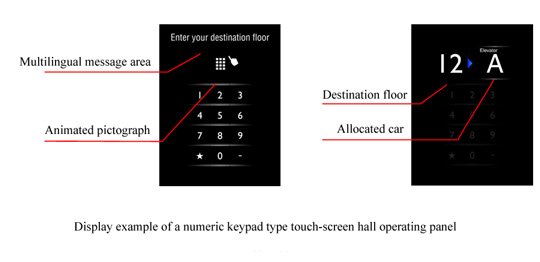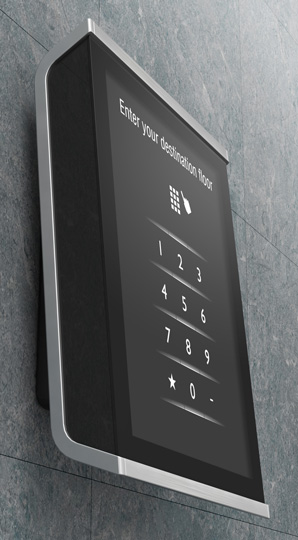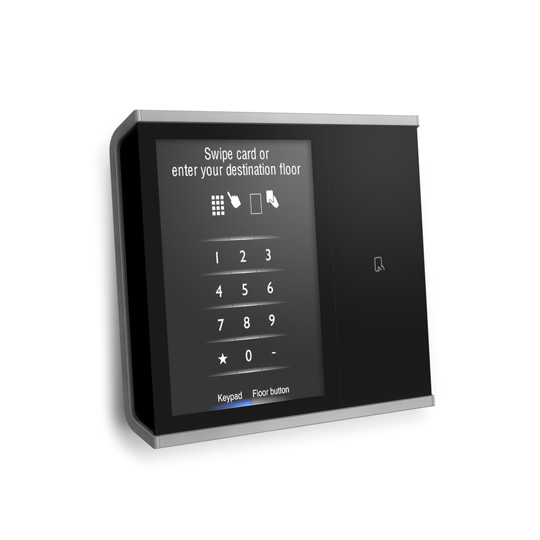News Release Archives
Note that the releases are accurate at the time of publication but may be subject to change without notice.
FOR IMMEDIATE RELEASE No.2886
Mitsubishi Electric Enhances "Destination Oriented Allocation System" for Elevators
Reduces average waiting time by about 10% while offering improved operability and design
TOKYO, December 3, 2014-Mitsubishi Electric Corporation (TOKYO: 6503) announced today the latest products in its Destination Oriented Allocation System (DOAS) lineup, which feature advanced functions and designs for extra-efficient elevator operation and user convenience. Sales will start on December 17 and prices will available by quote.

Mitsubishi Electric's DOAS optimizes multi-car elevator systems by allocating cars efficiently according to the floors that passengers input while waiting in the hall, helping to reduce both wait and travel times. The system also eliminates the need to press buttons upon entering the car. DOAS uses destination-control technology to maximize car allocation efficiency, including by directing passengers who are going to the same floor to use the same elevator. As a result, cars do not stop needlessly on floors being served by other cars.

The new car allocation method reduces average wait time by about 10% during congested hours, and lowers the possibility of long waits lasting 60 seconds or more during off-peak hours by about 20%. The calculations are comparisons with conventional elevator systems and are based on simulations conducted by Mitsubishi Electric using 16 floors, six cars and 20-person load capacities.

The DOAS hall panels feature upgraded design and ease of use. Big, bright 10.4-inch touch screens offer a choice of instructions in Japanese, English or Chinese. Audio guidance is optional.
The new car allocation method reduces average wait time by about 10% during congested hours, and lowers the possibility of long waits lasting 60 seconds or more during off-peak hours by about 20%. The calculations are comparisons with conventional elevator systems and are based on simulations conducted by Mitsubishi Electric using 16 floors, six cars and 20-person load capacities.
The DOAS hall panels feature upgraded design and ease of use. Big, bright 10.4-inch touch screens offer a choice of instructions in Japanese, English or Chinese. Audio guidance is optional.

Building security can be enhanced by combining DOAS with a separate access-control system. The administrator can choose from two types of registration methods: floor access control or automatic call registration. In the first method, the passenger waves an ID card over the card reader in the hall and then enters an authorized floor number. In the second method, the user's floor is preregistered in the ID card, so after the card is waved over the reader, the panel directs the user to the elevator going to that floor. There is no need to enter the floor number manually.


